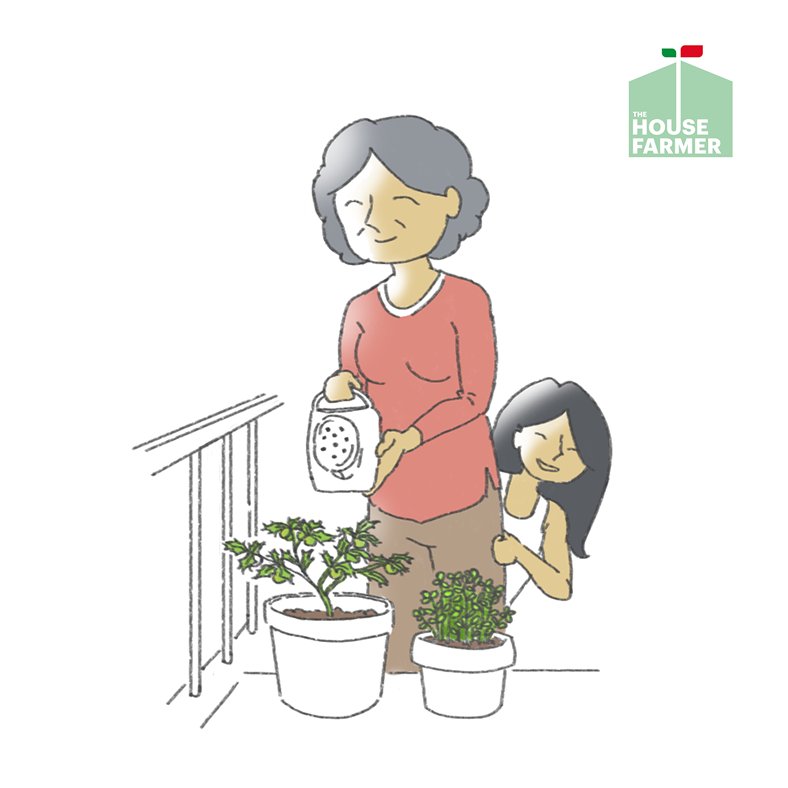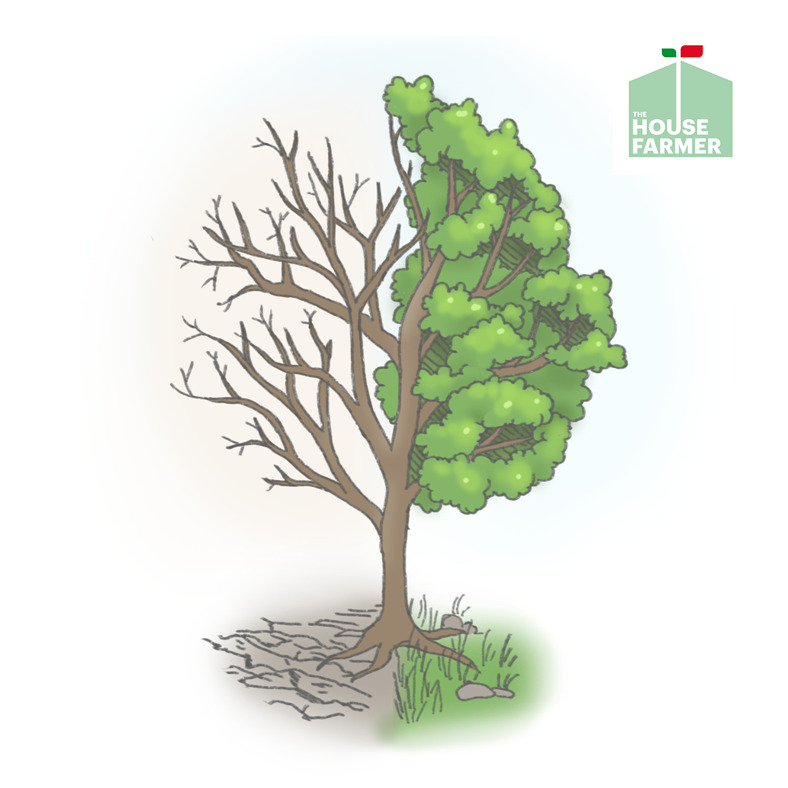
Growing basil: All You Need to Know
I learned from my grandmother all the secrets of growing basil. She used to say that aromatic herbs were magical and she would burn dry basil leaves.
Green basil, the new dress of what the knife severed with horror, a branch of life, the sacred relic, the severed head, reborn and blossoming, you feed on eyes that look at the dark, on lips pressed in a maternal kiss, in eternal silence, green with pain and the scent ... The scent... How sweet is the scent, when love is filled with immensity.
My doomed seedling
with my tears I have watered you
With the trowel I have tilled you...
For your eyes they have killed me.
(The Decameron – Boccaccio)
It’s not summer without the scented whiff from a basil plant as you walk past it. It can’t be summer without a handful of its leaves to liven up a green salad, or sprinkled on top a fresh and inviting Caprese, or again crushed with garlic in a creamy bright green pesto. That’s basil: once you smell it, you’ll never forget it.
Growing basil is pretty easy but there are a few tricks to know.
Sometimes, following the inspiration of Demeter, the goddess of the harvest and agriculture, I start from the seed. After the Ides of March, as Ovid would say, that is from mid/late spring until the summer solstice.
GROWING BASIL ACCORDING TO MY GRANDMA TIPS
I plant the seeds in 10 cm pots and place them somewhere sunny. The shoots that will sprout after a couple of weeks will then need to be divided, each one put in a separate container. When the seedlings have grown to 5/7 cm in height, they should be trimmed, gently snipping off the top of the seedling with your fingers to ensure that they branch out and thicken.
Basil needs light but the direct sun is harmful to it; it loves water but does not tolerate waterlogging. It is a fussy plant. It’s no coincidence that they call it “the King”. Its name comes from the Greek word which means "royal". Grandmother used to say that basil is as cantankerous as a King, that you have to anticipate its needs, just like with a King; it can be glorious one day and have wilted leaves the next. A little bit of sun and a little shade; he is the one who decides.
Grandma always used to spray our skin with a potion, as she called it, to prevent mosquitoes and other insects from biting and stinging us in the summer countryside.
It was a decoction made with basil.
Just one last thing. I discovered that basil and chili pepper flirt. If put in the same pot they will help each other and are happier, growing more luxuriant.
And of course you cannot grow basil without also having tomatoes on the balcony. I suggest you to have a look also to this post: TOMATO PLANTERS: How To Grow Tomatoes in Pots.
But I would like to add something more.
Below is the narration of a story related to me by a friend - a prestigious name in advertising in Italy - Salvo Scibilia. He has been following my anecdotes about Grandma and The house farmer project, and told me this incredible story in which basil plays an important part. I hope you enjoy it!
Growing basil: The companions of St. John (by Salvo Scibilia)
It was a warm and boisterous June evening fifty years ago. One of those evenings when a group of us would get together and cook up a pan of pasta over heated political discussions, guitars, cigarettes and a few beers. I was bound to Piero by strong feelings of friendship filled with courage and sincerity. “Why don't you become companions of St. John?” someone suggested. For political-ideological reasons we were strongly bound to popular traditions but no one knew anything about the company of St. John. The person who launched the proposal was a bespectacled friend who studied ethnology and he told us about this old custom. The feast of St. John falls on 24 June, shortly after the summer solstice. The companions of St. John freely enter into a pact of friendship and mutual assistance which lasts a lifetime. The bond between the companions is so strong that, in extreme cases, it might even mean sacrificing one's own life to rescue and protect the other. People become companions in three ways. Ring companions, by acting as witnesses at a wedding; cap companions, by acting as godparents at a baby’s christening (the cap, in this case, is the bonnet worn by the baby); and companions of St. John. In the Madonie region of Sicily the two companions would exchange a red carnation and eat a meal together after reciting formulas of companionship. In the Messina area, the ceremony involved the exchange of a sugared almond. In other places it was customary to a sip a glass of salt water or braid the companions’ hair. In Barrafranca (Enna) there was a strongly theatrical ritual:
(Both together)
E cumpari a sangiuvanni
sa cc’avimmu nni spartimmu
e s’avimmu ‘na favuzza
nn’a spartimmu menza l’unu.
(And companions of St. John,
We share whatever we have,
And if we have just a bean
We divide it in half each.)
The first companion: Cumpà, cchi vuliti: risu o ossa?
(Companio, what do you want: rice or bones, i.e. happiness or sorrow?)
The other answers: Ossa!
(Bones. Alluding to one's own sorrowful future)
The first: E nni jammu nni la fossa!
(And we’ll go into the grave together!)
The other answers: Risu!
(Rice. Refering to his happiness)
The second: E nni jammu 'n Paradisu!
(And together we’ll go to Heaven).
Cumpari simmu e cumpari ristammu… sputa ‘nterra!
(Companions we are and companions we shall be forever... spit on the ground!). They would spit to seal the promise and at that moment they became companions for life.
In the province of Catania, our pundit declared, one companion gives the other a basil plant tied with a red bow and the other reciprocates with a cucumber decorated with a similar red ribbon. The male and female principles are obvious. The clear association between cucumber and phallus hardly needs explaining. But to appreciate the allusion to the female sex, one has to remember that Sicilian basil has very small leaves that look like a dense bush very similar, except for the colour, to the triangle formed by the hairs around the woman’s sex.
That distant summer evening, there was a great deal of discussion, cheerful and heated, about the distribution of sexual roles, and amid the general hilarity, though the feeling of close friendship between me and Piero remained, the company of St. John faded. No one was willing to take on the female side of the relationship. Before writing these notes I tried to read up on this tradition on the Internet. There are numerous references to basil but no one mentions cucumbers. Now, either our pundit friend was taking our happy gang for a ride, or the story was another variant, as commonly happens with myths. Perhaps it is just an old ritual fallen into oblivion.
For fifty years the basil-cucumber exchange has continued to ferment within me, unchanged and alive. I’m not prepared to repress it. Piero, my companion manqué and still my friend, would feel let down. We live in an age when gender roles are blurred and could well disappear, but we will not be here to see it happen.
Read also: #meandgrandma9
Grow basil on your home vegetable garden: Discover Jocondo The Smart Garden



